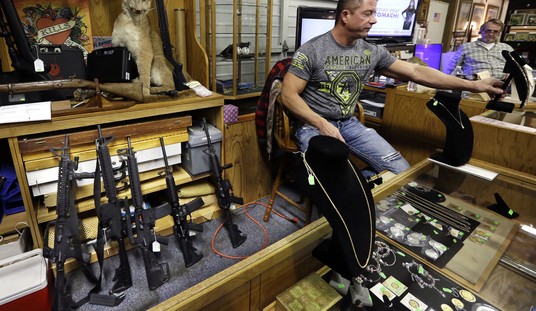
Earlier today, I posted about a proposal to use smartphones and smartwatches to spy on certain Americans. The idea has sparked outrage throughout the country, as it should have.
Over at the National Review, though, editor Charles C.W. Cooke took the concept and had a little fun with it.
At first, I was horrified by this idea. But then I remembered that it’s “time for leadership” and that we have to “do something,” and all my objections disappeared upon the instant. Sure, there are obvious Fourth Amendment problems here. But, when you think about it, there’s no way that the Founding Fathers could have imagined cell phones or smart watches (where exactly does the Constitution mention them!?) — and, anyway, if you read the Fourth Amendment’s text you’ll notice that it uses the same “right of the people” language as does the Second Amendment, and that it should therefore be read to apply not to individuals but collectively.
It’s a fairly short post, so you’ll want to go and read it for yourself. I’m not interested in reposting all of Cooke’s work here.
What I do want to do is applaud him for it.
As you probably noticed, Cooke uses anti-gun arguments, only he flips them around to appear to support this particular issue, and issue which many on the left are uncomfortable with supporting. In fact, he makes some better points.
For example, while anti-gunners routinely argue that the Founding Fathers couldn’t have envisioned our repeating firearms, they had repeating firearms back in their day. More than one model of it, to be fair. The idea that they wouldn’t foresee such guns wouldn’t continue to be developed and refined suggests that some don’t think the Founders had any sense of vision whatsoever. Hilarious when you consider how many representative republics existed in the world at the time of our nation’s birth.
Yet communications hadn’t changed much since the last fifteenth century. The moveable type printing press was still the cutting edge of communications technology. Sending messages from one town to another generally still required a horse and someone to carry the message–carrier pigeons are only good for very short messages, after all–just as it had for centuries. There were visual signals, sure, but they were generally crude and difficult to send messages with as well.
The electrical telegraph was still decades off in the future when the Bill of Rights was penned.
Yet no one has ever believed that privacy protections that the Bill of Rights protects doesn’t extend to more modern communications methods. Few argue that Fourth Amendment rights don’t also protect your car–a conveyance device our Founding Fathers probably never envisioned–yet some of these same people claim the Second Amendment doesn’t protect semi-automatic rifles and handguns.
No. I’m sorry, but that argument simply doesn’t hold water, and Cooke skewered that idea quite well in his relatively short post that also pokes at the “do-something” crowd quite nicely as well.
Mr. Cooke, I applaud you, sir. Well done indeed.








Join the conversation as a VIP Member